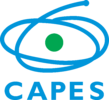Difference between revisions of "Documentation/Nightly/Extensions/MSLesionTrack"
Acsenrafilho (talk | contribs) (Created page with "<noinclude>{{documentation/versioncheck}}</noinclude> <!-- ---------------------------- --> {{documentation/{{documentation/version}}/module-header}} <!-- --------------------...") |
Acsenrafilho (talk | contribs) |
||
| (2 intermediate revisions by the same user not shown) | |||
| Line 9: | Line 9: | ||
{{documentation/{{documentation/version}}/module-introduction-row}} | {{documentation/{{documentation/version}}/module-introduction-row}} | ||
Acknowledgments: | Acknowledgments: | ||
| − | This work | + | This work was partially funded by CAPES and CNPq, a Brazillian Agencies. Information on CAPES can be obtained on the [http://www.capes.gov.br/ CAPES website] and [http://www.cnpq.br/ CNPq website] <br> |
| − | + | Author:Antonio Carlos da S. Senra Filho, CSIM Laboratory (University of Sao Paulo, Department of Computing and Mathematics)<br> | |
| − | + | Contact: Antonio Carlos da S. Senra Filho, <email>acsenrafilho@usp.br</email><br> | |
| − | Contact: | ||
| − | |||
| − | |||
{{documentation/{{documentation/version}}/module-introduction-row}} | {{documentation/{{documentation/version}}/module-introduction-row}} | ||
{{documentation/{{documentation/version}}/module-introduction-logo-gallery | {{documentation/{{documentation/version}}/module-introduction-logo-gallery | ||
| − | | | + | |Image:CSIM-logo.png|CSIM Laboratory |
| + | |Image:USP-logo.png|University of Sao Paulo | ||
| + | |Image:CNPq-logo.png|CNPq Brazil | ||
| + | |Image:CAPES-logo.png|CAPES Brazil | ||
}} | }} | ||
{{documentation/{{documentation/version}}/module-introduction-end}} | {{documentation/{{documentation/version}}/module-introduction-end}} | ||
| Line 24: | Line 24: | ||
<!-- ---------------------------- --> | <!-- ---------------------------- --> | ||
{{documentation/{{documentation/version}}/extension-section|Extension Description}} | {{documentation/{{documentation/version}}/extension-section|Extension Description}} | ||
| − | + | [[Image:MSLesionTrackExtension-logo.png|left]] | |
| − | + | Multiple sclerosis (MS) is a degenerative neurological disease growing relevance. The segmentation of lesions on magnetic resonance imaging (MRI) and its boundaries with healthy tissue remains a challenge for correct diagnosis of MS patients. Currently, many imaging methods Magnetic resonance imaging have been applied to this problem, but with success modest.The diffusion tensor imaging (DTI) have been discussed as an important imaging technique which could be useful for the diagnosis of MS. However, main barrier is the low signal to noise ratio (SNR) existing in such imaging techniques, which eventually diminish the efficiency of the method of segmentation. This extension aims to provide image processing tools in order to segment and detect MS lesions and the surrounding NAWM in the patient disease progression. | |
| − | |||
| − | |||
| − | |||
| − | |||
| − | |||
| − | |||
| − | |||
| − | |||
| − | |||
<!-- ---------------------------- --> | <!-- ---------------------------- --> | ||
{{documentation/{{documentation/version}}/extension-section|Modules}} | {{documentation/{{documentation/version}}/extension-section|Modules}} | ||
| − | *[[Documentation/{{documentation/version}}/Modules/ | + | *Support Modules |
| − | *[[Documentation/{{documentation/version}}/Modules/ | + | **[[Documentation/{{documentation/version}}/Modules/BrainExtractionTool|Brain Extraction Tool]] |
| − | *[[Documentation/{{documentation/version}}/Modules/ | + | **[[Documentation/{{documentation/version}}/Modules/BrainTissuesMask|Brain Tissues Mask]] |
| + | *Lesion Segmentation Modules | ||
| + | **[[Documentation/{{documentation/version}}/Modules/DTILesionTrack|DTI Lesion Track]] | ||
| + | **[[Documentation/{{documentation/version}}/Modules/LongitudinalDTILesionTrack|Longitudinal DTI Lesion Track]] | ||
<!-- ---------------------------- --> | <!-- ---------------------------- --> | ||
{{documentation/{{documentation/version}}/extension-section|Use Cases}} | {{documentation/{{documentation/version}}/extension-section|Use Cases}} | ||
[http://plastimatch.org/data_sources.html Sample data] to use with modules. | [http://plastimatch.org/data_sources.html Sample data] to use with modules. | ||
| − | <gallery widths=" | + | <gallery widths="400px" perrow="2"> |
| − | Image: | + | Image:DTI_FA_wm_segmented.png|DTI-FA map with the white matter segmented |
| + | Image:DTI_FA_lesions.png|MS lesions segmented from the DTI-FA maps (using statistical approach) | ||
</gallery> | </gallery> | ||
| Line 53: | Line 48: | ||
<gallery widths="200px" perrow="4"> | <gallery widths="200px" perrow="4"> | ||
| − | Image: | + | Image:mslesiontrackextension_tutorial_ppt.png|[http://forge.abcd.harvard.edu/gf/download/frsrelease/110/1023/3D_Slicer_Plastimatch_Registration_Tutorial.ppt Download tutorial] |
</gallery> | </gallery> | ||
| Line 62: | Line 57: | ||
<!-- ---------------------------- --> | <!-- ---------------------------- --> | ||
{{documentation/{{documentation/version}}/extension-section|References}} | {{documentation/{{documentation/version}}/extension-section|References}} | ||
| − | * | + | * |
<!-- ---------------------------- --> | <!-- ---------------------------- --> | ||
Latest revision as of 13:42, 30 April 2016
Home < Documentation < Nightly < Extensions < MSLesionTrack
|
For the latest Slicer documentation, visit the read-the-docs. |
Introduction and Acknowledgements
|
Acknowledgments:
This work was partially funded by CAPES and CNPq, a Brazillian Agencies. Information on CAPES can be obtained on the CAPES website and CNPq website | |||||||||
|
Extension Description
Multiple sclerosis (MS) is a degenerative neurological disease growing relevance. The segmentation of lesions on magnetic resonance imaging (MRI) and its boundaries with healthy tissue remains a challenge for correct diagnosis of MS patients. Currently, many imaging methods Magnetic resonance imaging have been applied to this problem, but with success modest.The diffusion tensor imaging (DTI) have been discussed as an important imaging technique which could be useful for the diagnosis of MS. However, main barrier is the low signal to noise ratio (SNR) existing in such imaging techniques, which eventually diminish the efficiency of the method of segmentation. This extension aims to provide image processing tools in order to segment and detect MS lesions and the surrounding NAWM in the patient disease progression.
Modules
- Support Modules
- Lesion Segmentation Modules
Use Cases
Sample data to use with modules.
- DTI FA wm segmented.png
DTI-FA map with the white matter segmented
- DTI FA lesions.png
MS lesions segmented from the DTI-FA maps (using statistical approach)
Tutorials
- Mslesiontrackextension tutorial ppt.png
Similar Extensions
N/A
References
Information for Developers
| Section under construction. |




